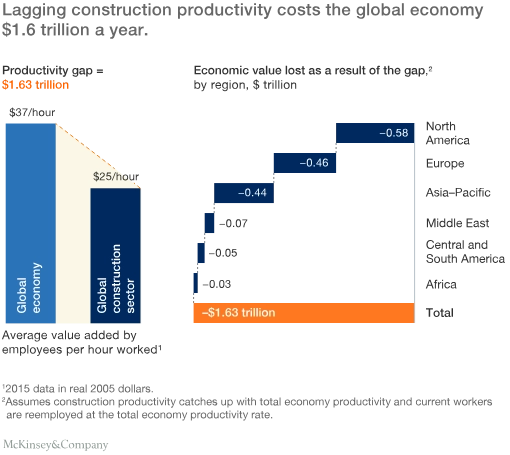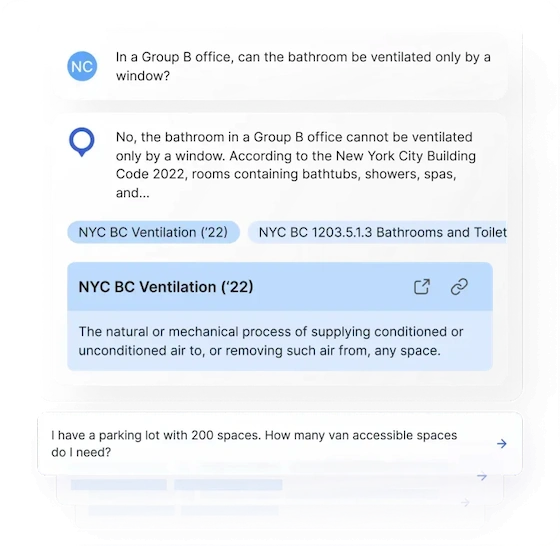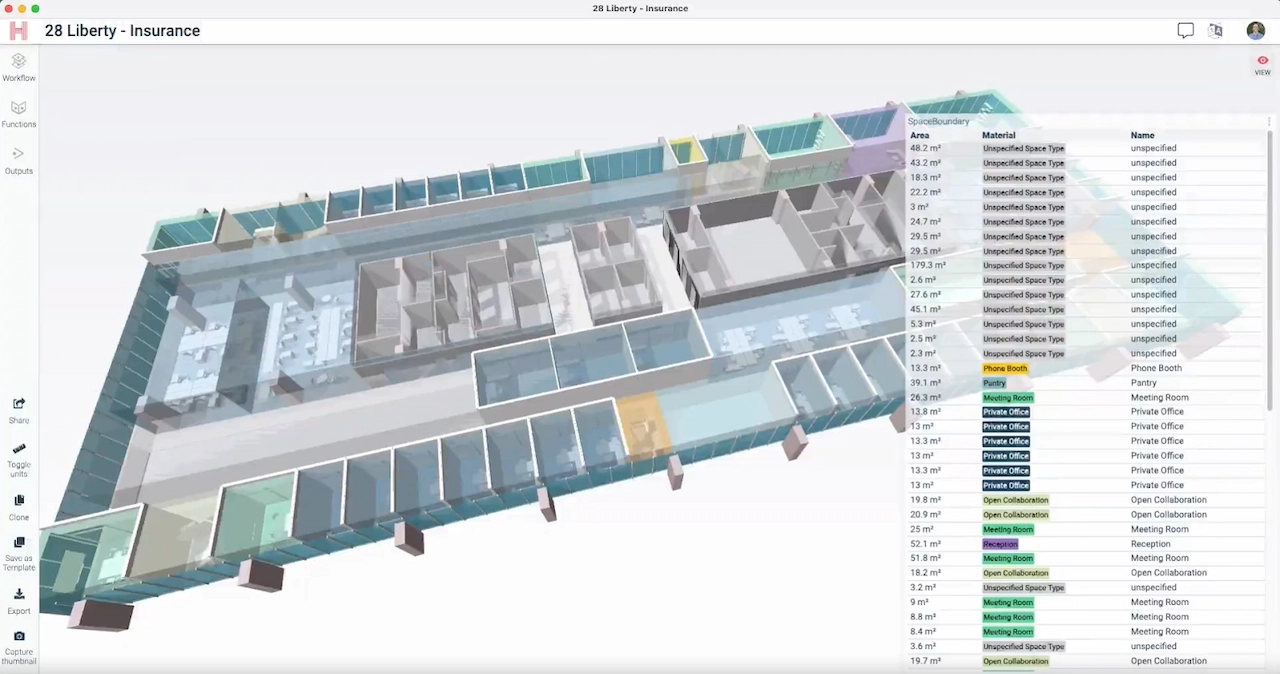Our mission here at Building Ventures is to help create a better built world. But what does a better built world look like? What are the essential elements or defining processes? Most importantly, what must we do now to create this better future? In this series, we explore how we must change the way we design, build, operate and experience the built environment to realize an improved future for us all.
Design is by far the shortest phase of the building life cycle, but it is fundamental to realizing a better built world. The relentless rush to break ground compresses the timeframe and scope for the myriad decisions and actions that owners, architects, engineers, and other project stakeholders take during design. Even more, the impacts of this phase are outsized: Decisions made during building design live on, from construction through to operations and occupant experience.
To achieve a better built world, we must change the way we design—and quickly. Good design sets the foundation for a sustainable, resilient, and equitable world. This is essential for structures that are responsive to the needs of individuals, communities, and the planet as a whole. Thoughtful and innovative design can even address challenges such as climate change, resource scarcity, and social inequality. Fortunately, a better designed world is well within our reach. And it doesn’t hinge on the development of any new, groundbreaking discoveries. Instead, it builds upon the systems we have in place right now, the technology advancements that continue to gain traction across the industry, and, most importantly, the data that we will be able to leverage more and more effectively every day.
The framework for data-driven design
The framework for changing the way we design our built environment has been in process since the emergence of the personal computer 40 years ago. This enabled the first generation of built world entrepreneurs, including the founders behind Autodesk and Bentley Systems for design, Primavera for scheduling, Timberline for cost estimating and the many other innovators who focused on digitizing and automating processes that were previously paper-heavy and inefficient. These initial transitions were pivotal for the industry, and we were energized by these leaps forward and eager to improve a digital design process.
I say “we” intentionally: During this time, Building Ventures General Partner Jesse Devitte and I played a part in this first wave of innovation at Softdesk, which developed architecture and civil design software. The company secured VC funding, later raised an IPO and was eventually acquired by Autodesk to accelerate its transition from CAD to BIM. And since that time, we have stayed connected as built environment entrepreneurs and investors while virtually all of the processes involved in designing, building, and operating our built world have been steadily digitized and automated.
The promises of the BIM revolution
Technology has radically transformed many aspects of individual productivity, particularly in design. For example, Building Information Modeling, or BIM, enables design teams to revise and generate fully coordinated drawing sets from a central model. This represented a step change in productivity relative to 2D CAD, which required manually editing dozens or hundreds of individual files. But the transition from CAD to BIM was slow—painstakingly slow for many of us in the industry. Early BIM technology was developed in the 1990s, but it was only in 2012 that more than 50% of architects, engineers, and contractors reported using it. We’ve observed countless additional workflows follow a similar trajectory, evolving from paper to spreadsheets to dedicated SaaS and mobile apps that struggle to gain widespread adoption by the industry.
This plodding pace isn’t exclusive to BIM, or even design. In 2020, McKinsey reported that the construction industry as a whole was lagging behind the global economy because of this reticence to develop and adopt wide scale digitization. The consulting firm estimated that, by going fully digital, the industry could save $1.6 trillion. In the years since, the construction industry has increased its pace toward going fully digital, due in part to the rapid rise of innovation and the influx of capital. Investment in AEC tech grew $50 billion between 2020 and 2022, and despite tech’s downturn in 2023, the construction-focused technology supporting the final push toward the industry’s digitization is still strong.

And it’s so strong that arguably the most valuable emerging asset is the knowledge trapped in the data that is the by-product of our recently digitized built environment. This information trail spans the full built environment lifecycle from conceptual design through construction to operations and retrofit. It has the potential to unlock new pathways to a better built world that to date have been largely untapped.
But this is all about to change with recent developments in AI and generative design. Datasets that were previously too large, unstructured, and fragmented for humans to parse in a timely manner are ideal targets for generative AI. We’ve seen this in other industries, like finance, legal, and even Major League Baseball, where analytics and data science has unlocked so many actionable insights.
Applying data to building design
There are examples today of entrepreneurs applying similar novel approaches in the built environment, and specifically in design. And as VCs, we have focused our efforts on the applications that promise the most impactful shifts throughout the entire building lifecycle. Our goal, after all, is to support the startups working towards a better built world, one that is resilient, sustainable, and equitable. In order to achieve this, we need design tools to simplify building code compliance, materials procurement, collaborative delivery, as well as applications that support generative and net-zero design.
Code compliance is a challenge that design teams face on projects of any description, and to date it has not been materially improved with technology. Why? Our nation’s building laws vary by location and jurisdiction. These laws are segmented by discipline, and they are frequently amended and republished, traditionally as books or CDs and more recently on government websites. The multiple layers of shifting local, state, and national building laws present a significant challenge to the architects, engineers, builders, suppliers, and countless other stakeholders charged with ensuring project compliance. Code infractions can lead to costly delays, rework, or punitive actions.
But navigating this fragmented patchwork of code laws doesn’t have to be a challenge. Luckily, it is a task perfectly suited to AI, and that’s why brothers Scott and Garrett Reynolds founded UpCodes. Their code compliance SaaS platform aggregates and normalizes the nation’s fragmented web of local, state, and national building codes. And their AI-powered code assistant, UpCodes CoPilot, provides tailored responses to project-specific questions, with links to relevant code sections.

The UpCodes platform features an AI-powered code assistant to provide tailored responses to project-specific questions, complete with links to relevant code sections.
The platform continually scans for and integrates all local amendments or changes to building codes. With all levels of government across the country adding decarbonization, resilience, affordability, safety, and other new requirements, compliance is getting even trickier. The stakes will become higher as the climate crisis worsens and the change in weather conditions outpaces the introduction and adoption of building codes. As of Q3 2023, FEMA reports that only 31% of jurisdictions currently prone to natural disasters have adopted appropriate codes to ensure new buildings are able to withstand these events. A better built world, which relies on the success of these regulations, will rely on UpCodes.
A better built world also relies on designers to specify building products and materials that strike the optimal balance of aesthetic, performance, cost, and sustainability. When we’re talking about sustainability in the built environment, we often reference the 40% problem to capture the impact our buildings have on the environment. The construction process creates 40% of all raw materials and contributes 40% of all landfill materials, far too great a cost to our environment let alone the project’s bottom lines. But solving for this is a challenge when the world’s building material and product specs are siloed across thousands of manufacturer and supplier websites and proprietary PDF formats. Comparing and selecting alternatives is a time consuming and error-prone process that contributes to procurement costs nearly double comparable industries.
This is the problem that Forest Flager and Pratyush Havelia, the co-founders of Parspec, have solved using AI and web crawlers to aggregate and normalize millions of product data sheets. It slashes from days to minutes the amount of time it takes for designers to specify, and for suppliers to quote, the highest performing, lowest carbon, and most cost-effective building products and materials needed for a better built world in the future.
Similarly, Federico (“Fed”) Negro and his founding team at Canoa are tackling inefficiency and waste in the FF&E space (i.e., furniture, fixtures and equipment, or as Fed puts it, everything that would fall out if you could turn a building upside down). Their “Canvas” platform unites interior designers, furniture dealers, and clients with a catalog that aggregates hundreds of brands, an AI co-pilot that reveals new and novel products, and a collaborative design environment that generates integrated mood boards, layouts, and schedules with real-time cost analysis and carbon emission insights.

Canoa’s platform is a collaborative design environment that leverages AI to suggest new and novel products, with real-time cost analysis and carbon emission insights.
And speaking of carbon emission insights, the built environment’s 40% problem applies to more than just raw materials consumption and landfill waste. Constructing and operating buildings accounts for a 40% share of both global energy consumption and carbon emissions. As with solar and EVs over the past 20 years, a perfect storm of government regulation, VC funding, and entrepreneurs alike has triggered waves of innovation targeted at enabling net carbon zero design, construction, and operations. As a team, we are always looking for solutions that help make better outcomes earlier—and that means intervention in the design process.
Adaptis is an excellent example of this. The company’s software is a simulation tool that generates, optimizes and validates design options for building owners to meet their carbon and waste diversion goals. The software uses a proprietary, patent-pending methodology for providing whole lifecycle decarbonization assessment, optimization, and capital planning based on the PhD work of co-founders Sheida Shahi and Aida Mollaei. And they are going to market in partnership with architects by tech-enabling their decarbonization and cyclical design services.
Finally, there’s the much glorified field of generative design, which may well deliver the most transformational impacts. Also referred to as computational design, these systems enable designers to explore and analyze the impact of an exponentially higher range of possibilities to unlock innovative and often wholly unexpected outcomes. This is the domain of Ian Keough and Anthony Hauck, the co-founders of Hypar, whose design automation platform enables built environment specialists to embed their expertise as algorithms to enable everyone to build better. That means more efficient design, more sustainable processes, and, ultimately, more resilient buildings.

An example of generative design using Hypar.
Solutions built and deployed by early creators on the platform include building product configurators to reduce waste, a mid-rise building generator, and space planning systems for datacenter, logistics, healthcare, and retail clients. And Hypar will soon release its first commercial solution—a collaborative healthcare planning system that slashes designs that used to take weeks to minutes.
Data-driven design for a better built world
The result of these representative technologies? Design teams will explore many more options in less time, in closer collaboration with general contractors, trade specialists, building product manufacturers, suppliers, modular builders, and others; all contributing their expertise during the earliest stages of design, at a time when it will have maximum impact in designing a better built world.
But this won’t all translate to an even shorter design process. Instead, design will become more strategic, more collaborative, and ultimately more impactful. We will see more involvement of design professionals across the entire lifecycle from pre-design through the traditional design phase and, ultimately, through operations. This is the design profession’s great opportunity in the newly digitally-enabled built environment.
Yes, AI and technology will continue to automate and obsolete many of the billable services that design professionals have traditionally relied on. But design professionals will thrive in new ways, and for this we can draw insights from the accounting industry, which has been disrupted by TurboTax, AI and other technological forces. In spite of this CPAs who have embraced technology are thriving by delivering higher-value, more strategic services. AI, data analytics, client portals and other SaaS offerings have enabled them to collaborate more strategically with clients. Advanced analytics has given them deeper insights into their clients’ financial situations, facilitated more proactive, consultative strategies, and allowed them to carve out niches where their expertise is valued.
The built world design professions are moving in the same direction and the examples above are just some of the many tech and data-enabled breakthroughs that will support this transition. And as venture investors in built world startups, we are most excited about the impacts to come. A new wave of entrepreneurs are finding ever more creative ways to leverage generative AI, computer vision, IoT, and a seemingly endless list of novel technologies. These breakthroughs will be packaged and delivered in ever more creative ways to help tech-enable the built world design professions and accelerate the transition to higher-value, more strategic services. This future is slowly coming into focus, and a better built world relies on it.


